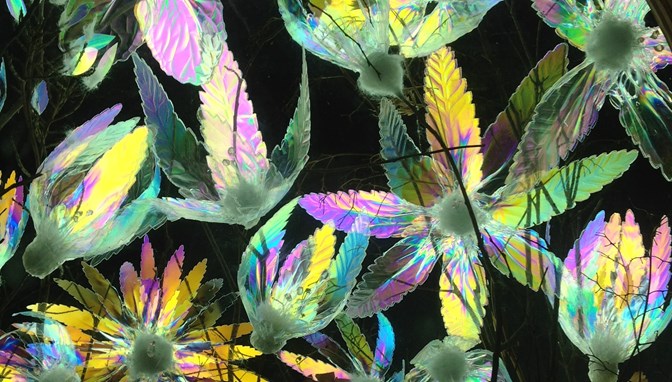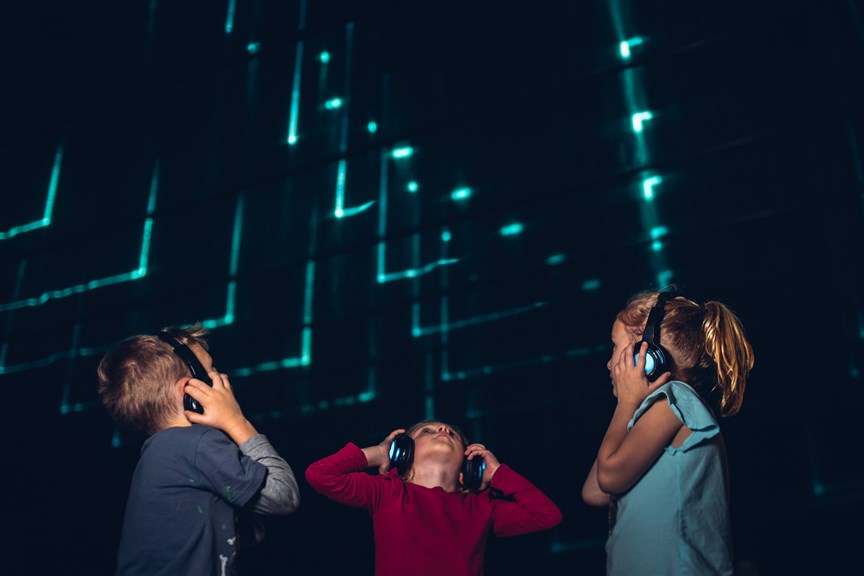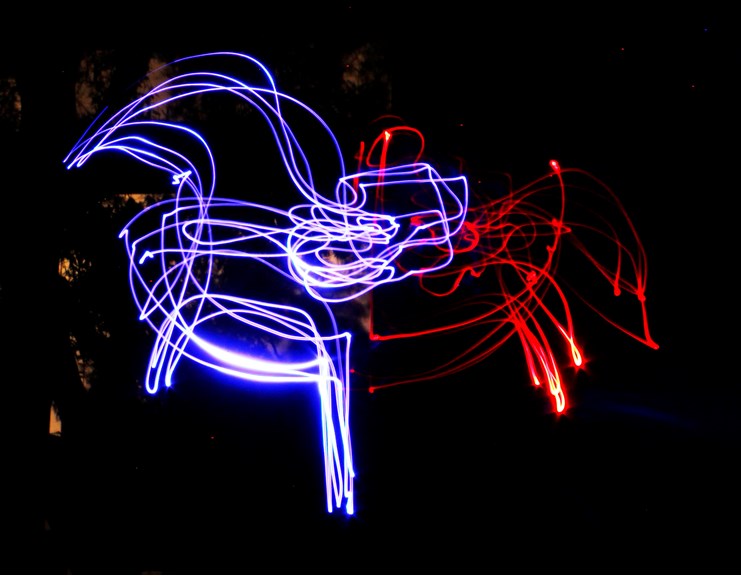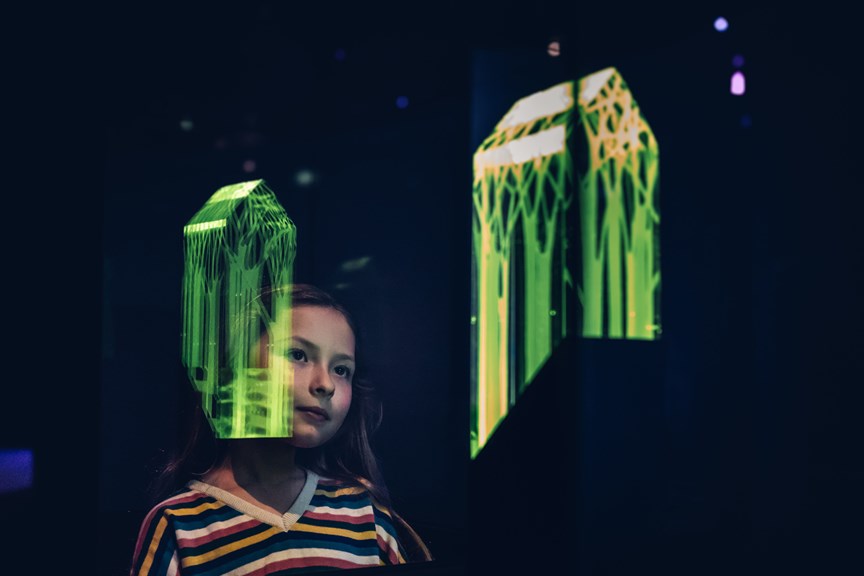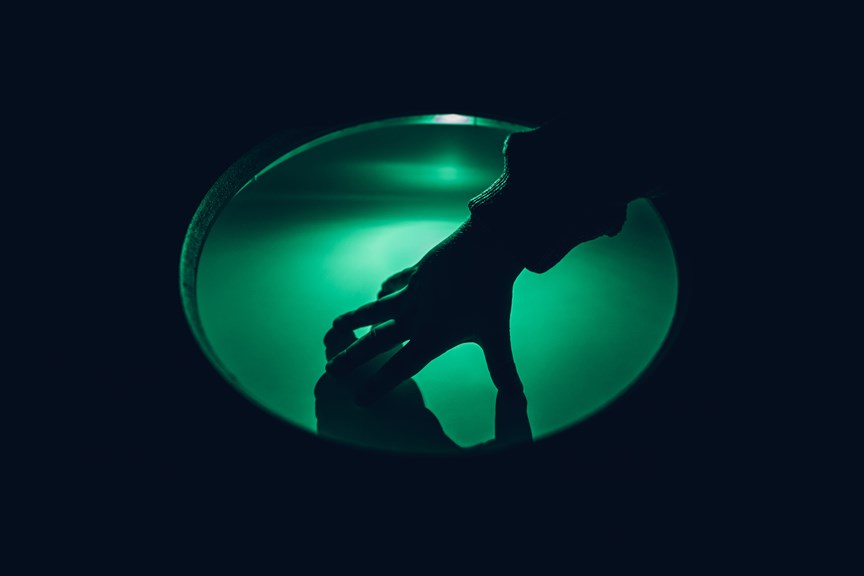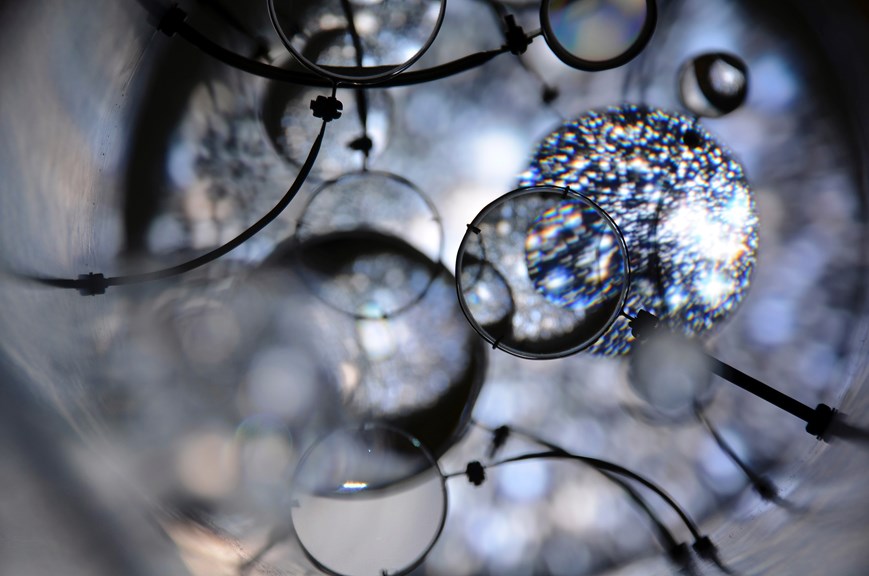Artists reveal the beauty of science
A stunning new experience, fusing science and art will open this week at Scienceworks.
Eleven experimental artists are creating an immersive experience with other-worldly aesthetic and dramatic optical illusions, expected to draw new audiences of adults and teens as well as families.
LightTime, opening 1 July, is an early initiative in Museums Victoria’s reimagining, encouraged by the appointment of new CEO Lynley Marshall.
"We are opening up the museums and all they have to more people, more often in new ways," she said.
"We are in an exciting process of exploration and expansion, rethinking what museums do and how our visitors engage with us. We are looking forward to sharing more of the ideas that are being generated in the coming months."
LightTime includes an infinity room that will challenge your sense of space, a light box that explores kinetics of motion, and a light pool using multiple lenses to reflect artificial cloud. Artists include Kit Webster, creator of Axiom which wowed audiences at White Night; MindBuffer, who will animate a massive laser display, and Skunk Control, a group of engineers and scientists from Victoria University who communicate science through art.
The combination of art and science is a new frontier for Scienceworks, said Dr Nurin Veis, Manager, Scienceworks. "LightTime is a different experience for Scienceworks. By merging science with art, we hope to unveil some of the fascinating intricacies of light, sound and optics and to show the connections between the beauty we experience and the science that enables it. This exhibition will be illuminating for the spirit as well as the mind and we think it will bring a whole new audience to be inspired by the impact of science and technology."
A program of new initiatives will be launched later this year, with interactive programs to engage a range of people in new ways.
LightTime: the works and the artists
Deep Dream
Kit Webster
Enter the Infinity Room and be prepared to lose any sense of where you are. A mosaic of mirrors, digital display and directional sounds will challenge visitors’ sense of space, giving the sensation of endless light and sound in a world without perceptible boundaries.
Kit Webster's multidisciplinary practice transverses sculpture, installation and new technologies, creating works for arts festivals, exhibitions, performance pieces and architectural projects. At the forefront of digital and spatial experimentation, he has become known internationally for his hybrid sculptural forms and immersive environments that enthral through the vivid play of audio and visual sequences. These works frequently feature animations generated through 3D projection-mapping programs and LED illuminations, and synchronised with intricate electronic sound compositions.
Lattice
Josh Batty & Mitchell Nordine | MindBuffer
Combining newly developed artificial intelligence software which responds to music with original laser beam software, the artists will generate a massive lattice of 300 square metres encompassing 10 holographic images floating above the viewers' heads. The work is generated in the space with no repetition or recording, so an original piece of music and light display will be created every day.
MindBuffer is a combination of Mitchell Nordine's sound work under the moniker "Mindtree" and Joshua Batty's laser programming, under the name of "Buffer". Batty is a Melbourne-based contemporary instrument builder, sound and real-time animation artist and creative software developer. His PhD research into creating synergistic relationships between sound and image has led to the creation of a real-time interactive audiovisual granular synthesis instrument. Nordine is a musician, sound designer and software developer with an interest in artificial intelligence.
Drawing Rhythm with Both Hands
Eiichi Tosaki and Steve Stelios Adam
In this collaborative performative presentation the artists explore the possibility of rhythmic pattern improvisation through the practice of two-handed or Bimanual Coordination Drawing (BCD). The presentation uses LED light instruments which move in tandem with synthesized sounds. An interactive event located in the Kids' Play zone, Drawing Rhythm enables participants to move light and watch as projected patterns are projected on the big screen, combined with synthesised sounds.
Dr Eiichi Tosaki is an artist, art historian and philosopher, who has developed Bimanual Coordination Drawing (BCD) over 30 years. He has lectured regularly on art, history, art theory, philosophy, religion, animation, Japanese culture and creative practice and holds two PhDs, one in historical and philosophical studies and the other one in architecture, art and design.
Steve Stelios Adam has created works for a diverse range of media, installations and live productions and performed with instrumentalists, ensembles, choirs and interactive music systems of his own design. His interest lies in the exploration of live and real-time approaches to composition and performance incorporating technology, particularly the live- capture and manipulation of physical gesture, instrumental and found sound, and the compositional implications of sound-spatialisation within immersive audio environments.
Epiphany's Genesis
Skunk Control
The infinite range of glowing colours in the mechatronic flowers of Epiphany’s Genesis are reminiscent of butterfly wings, insect exoskeletons and opals. The beauty of the works is a function of birefringence, the optical property that changes the way we see light depending on angle. The audience fuels the flowers with ideas and in turn the flowers provide enlightenment so as to further fuel creativity and the genesis and exploration of ideas. The constantly changing installation represents the infinite ideas that this gateway of possibilities accumulates from those below thinking and dreaming.
Skunk Control is a group of engineers, scientists, artists and educators from Victoria University. The group’s aim is to communicate art through science and science based disciplines through art via installations that prompt investigation and engage the heightened feelings of excitement that define the process of discovery.
Light Pool
Lienors Torre & Rose Woodcock
The meditative space of Light Pool explores the remarkable capacity of light to be two things at once – both the source of illumination and what is held within an object as refection. Light Pool sets up a space for visitors to reflect on the relationship between these elements. Looking into the pool is an encounter with the immateriality of light through the solid reality of hundreds of magnifying lenses.
Dr Lienors Torre is a lecturer in animation production, history and theory in the School of Communication and Creative Arts at Deakin University, Melbourne. Her research investigates the nexus between screen and object. She is also a glass artist and has taught multiple master classes at Pilchuck Glass School, Seattle, USA.
Dr Rose Woodcock is a lecturer in animation theory and practice, and creative art methods in the School of Communication and Creative Arts at Deakin University, Melbourne. Her research includes investigating the possibilities visual perception and optics, animation and movement, and the inherent ambiguity of pictorial objects.
Lost Room
Lienors Torre
Lost Room is a solid prism house that demonstrates the effect of total internal reflection. The angle of vision looking into Lost Room determines the relationship between the viewer, the object and the optical properties of prisms. See Lienors Torre's bio above.
For the Time Being 2017
Leslie Eastman
In For the Being of Time optical-kinetic forms address ideas of the circulation of moving bodies in time and space. The works are derived from Eastman’s drawing practice that employs repetition and geometry to suggest natural processes of iteration and generation as well as from his interest in scientific instruments of measurement and observation. These pairings suggest a species of clock whose hands move unceasingly, literally performing the round in a cycle of contraction and diffusion. The works are also light works with light reflecting from the circulating vanes of the forms. They reflect light colour and movement in their surroundings. The works are lit to accentuate the interplay of shadow and reflection across two and three dimensional planes.
Leslie Eastman uses lenses and light, large scale mirrors, drawing and video to explore the deceptively simple fact of our presence in and perception of the world. He has held over thirty solo and collaborative exhibitions nationally, at venues such as ACCA, Linden and Experimenta, and internationally. He has been the recipient of grants from the Australian Film Commission, the Australia Council for the Arts and Arts Victoria.
blue|red:VIMS\SIMS
(((20hz)))
The power of light and sound to cause bodily sensations is illustrated in Blue: Red, which explores the relationship between perceived and implied motion. An interactive light and sound box, activated by visitors' hand motion, enables participants to experience powerful physical responses. There are two options – blue headphones for the visceral experience and red headphones for analysis of what is happening.
(((20hz))) is Darrin Verhagen, a sound artist who has performed his minimal, experimental sound works at festivals around the globe and has more recently started performing his dark orchestral material as Shinjuku Thief. He lectures in sound design, soundtrack and electronic music at RMIT University, previously having run the Dorobo record label.
Aberration Scope
Daniel Armstrong
Look through the extraordinarily designed telescope inside this simulation and experience the night sky. Using beautiful projections that combine photography and astronomy, this work creates the sensation of star-gazing inside the confines of the museum.
Daniel Armstrong is a photo-media / installation artist and tertiary lecturer. His current research explores relationships between photography and astronomy with a specific interest in how scientific imaging both falters and succeeds at the edge of representation and relationships of the body to space and visualisation of the cosmos.
For adult adventurers, there will be NightLight an after hours event at LightTime on Friday 18 August.
Images and videos for LightTime are available on Dropbox.
For more information please contact:
